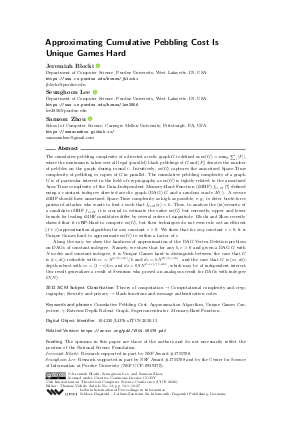LIPIcs.ITCS.2020.13.pdf
- Filesize: 0.72 MB
- 27 pages

 Creative Commons Attribution 3.0 Unported license
Creative Commons Attribution 3.0 Unported license



























Feedback for Dagstuhl Publishing